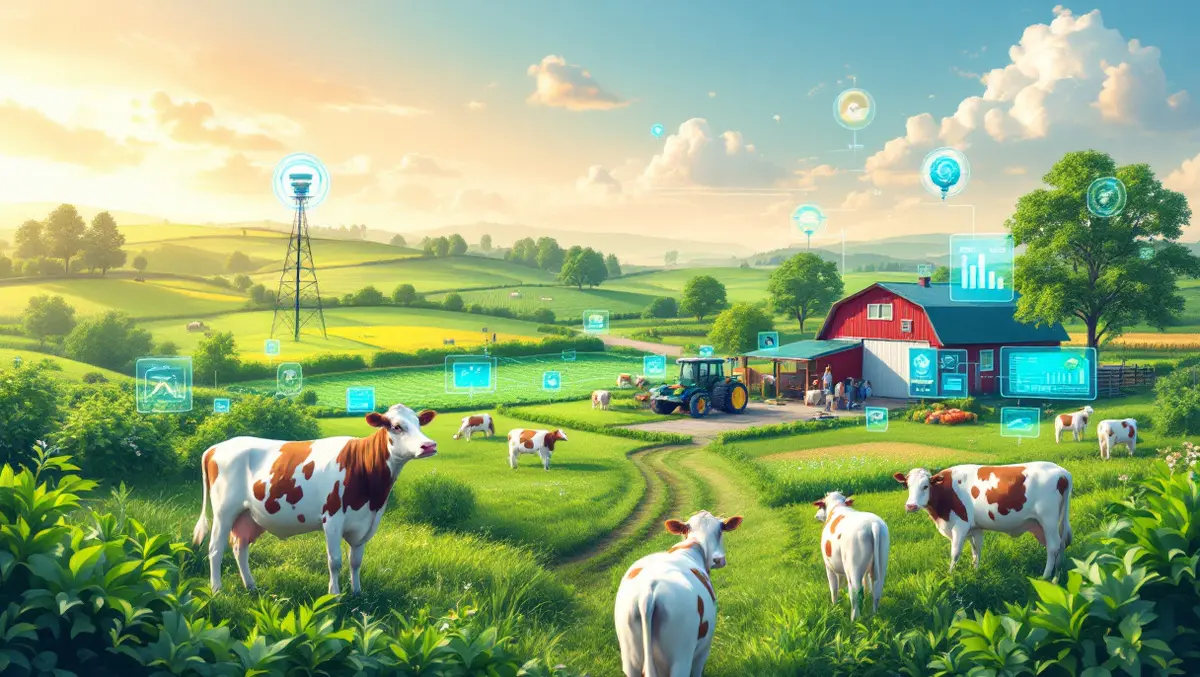
Aimer Farming unveils AI toolset to boost farm profitability
Aimer Farming has announced the launch of Aimer Vision, a new AI toolset designed to improve dairy management profitability for New Zealand farmers.
Aimer Vision employs AI-driven machine vision techniques to assess pasture cover, achieving approximately 90% accuracy through a five-second, 180-degree scan using a standard smartphone. Farm workers can utilise this tool while conducting their regular tasks, offering instant analysis and tailored advice.
Industry estimates indicate that regular and precise pasture measurement with Aimer Vision could boost farm profits by as much as USD $400 per hectare. This could potentially add between USD $60,000 to USD $80,000 in annual revenue for an average-sized dairy farm.
Jeremy Bryant, Founder and Chief Technology Officer of Aimer Farming, stated, "Traditional pasture measurement methods are often labour-intensive, inconsistent and take hours of time to 'walk the farm' on a weekly basis. AIMER Vision delivers instant, AI-powered insights using a smartphone, allowing farmers to optimise grazing, reduce waste, and improve profitability - all without increasing labour costs. Our industry estimates suggest that regular and accurate pasture measurement using Aimer Vision could boost farm profits by up to $400 per hectare - potentially adding $60,000 to $80,000 in annual revenue for an average-sized dairy farm."
The innovation was initially available only to select farms during a BETA phase, as part of a project funded by an Agmardt Agribusiness Innovation Grant. Following the ingestion of 15,000 video scans across all four grazing seasons to enhance accuracy, Aimer Vision is now set for a broader launch. A full year of seasonal data gathering is also underway in Ireland to facilitate future European deployment.
Jeremy remarked, "AI is revolutionising so many industries; and we believe farming should be one of them. Applied AI can help dairy farmers drive huge improvements in pasture measurement, management automation, profit and sustainability. We've been talking about Aimer Vision for a while now; and it's exciting to have refined the product to a point where it's ready for wide launch and a potential game-changer for users."
The user-friendly application of Aimer Vision aims to make pasture measurement more accessible, circumventing the need for specialised skills. This addresses ongoing labour shortages while enhancing the precision of pasture data, which optimises grazing patterns and feed management, thus contributing to increased farm productivity. The system also offers predictive insights for pasture growth, allowing planning and resource allocation up to 21 days in advance.
"Pasture management is a complex puzzle, requiring constant calculations, predictions and communication. By building a 'digital twin' of each paddock on every farm, Aimer learns growth rate patterns, predicts pasture performance and offers tailored recommendations, from supplement levels to grazing plans. Aimer Vision is a powerful way of making sure farmers save even more time by making inputs easy and instant," Jeremy explained.
Phil Townend, Chief Commercial Officer at Aimer Farming, noted the broader implications, saying, "The potential impact of AIMER Vision extends well beyond the farm gate. AIMER is building the world's largest pasture productivity database, which could help global food corporations measure sustainability from farm to product, and input suppliers understand the efficacy of their products. The value of this data, alongside the productivity gains, is significant."
He further added, "New Zealand's dairy sector is a key driver of the economy, but rising costs, labour shortages, and stricter environmental expectations mean farmers must find smarter ways to operate. AI-driven solutions like AIMER Vision offer a way to boost efficiency without increasing workforce pressure, helping farms remain competitive in a changing global market."
As New Zealand plays a significant role in global dairy exports, advancements such as AIMER Vision have the potential to significantly impact the sector, affecting both profitability and sustainability in dairy farming.


